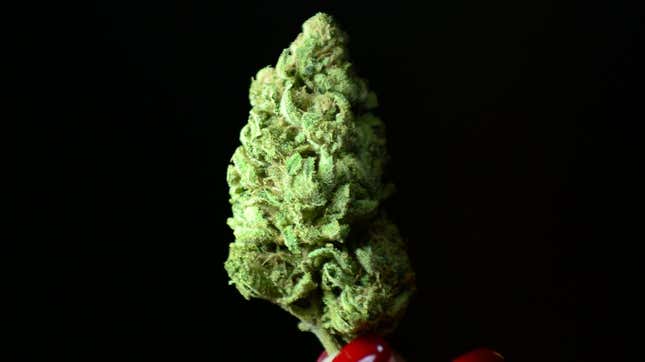
Cannabis needs water to grow, but water is scarce in California right now. The state is experiencing a record-breaking megadrought which has been exacerbated by this summer’s extreme heat. Some weed growers are resorting to stealing water to make sure they have enough to tend to their farms.
Water theft is nothing new in California. Back during a major drought in 2014, someone stole 20,000 gallons of water from an elementary school, while others hit up fire stations and tapped into neighborhood hydrants in the middle of the night.
But a recent CalMatters investigation found that across the state, water thievery has soared to record levels. This year, residents have reported water theft to state authorities at twice the rate they had a decade ago. In northern Los Angeles County’s Antelope Valley, demand rose to three and half times normal. Up the coast in Mendocino County and Sonoma County, thieves have compromised the already depleted waterways of the Russian River.
California’s water shortage is endangering all kinds of crops, so it stands to reason that growers of all kinds could be behind these covert water operations. But the most common reason for this theft, experts believe, is keeping illegal weed farms healthy. While legal farmers and ranchers can get their water through traditional channels, those operating in secret don’t have that option.
“We are absolutely seeing more aggressive water-stealing by marijuana cultivators,” Lieutenant John Nores, head of the Fish and Wildlife’s Marijuana Enforcement Team, told NBC Bay Area. “Water is getting much more limited with the drought.”
Despite some California officials’ claims to the contrary, cannabis isn’t an especially thirsty crop. When grown legally, it requires about the same amount of water as tomatoes and about 33 times less water than almonds, the authors of a recent study found. But with so many illegal operations around the state—officials estimate that there are up to 4,000 unlawful pot farms in Nevada County alone—this activity can still make a huge dent in water supplies. In the last two years, the Fish and Wildlife’s Marijuana Enforcement Team said, unlicensed pot growers have stolen 1.2 billion gallons of water across the state, or the equivalent of 2,000 Olympic-sized swimming pools.
Officials have made some attempts to address all of this water theft. In Nevada County, investigators are cracking down, issuing cannabis search warrants in an attempt to find the culprits. In Antelope Valley earlier this year, the Los Angeles County Fire Department ordered the removal of 100 fire hydrants after so much water was clandestinely taken from hydrants that the resulting low water pressure hindered firefighting operations this past March. And last week, the Los Angeles County Board of Supervisors also greenlit a resolution to petition state lawmakers to give them the authority to prosecute water theft, especially during severely dry periods. With climate change increasing the odds of more extreme drought in the state and across the West, it’s important that officials do all they can to conserve water resources.
Perhaps another way to crack down on illegal water theft would be to work to bring more illicit grow operations into the legal market. As the Los Angeles Times editorial board wrote this week, when the state of California made growing weed legal in 2016, they didn’t make it very easy for legitimate growers to get their operations licensed. But aiding more farms in that process could mean a greater percentage of them are subject to state regulations, including regulations on water use. Weed growers could also adopt other, less environmentally damaging forms of growing than current indoor grow ops that dominate the industry.